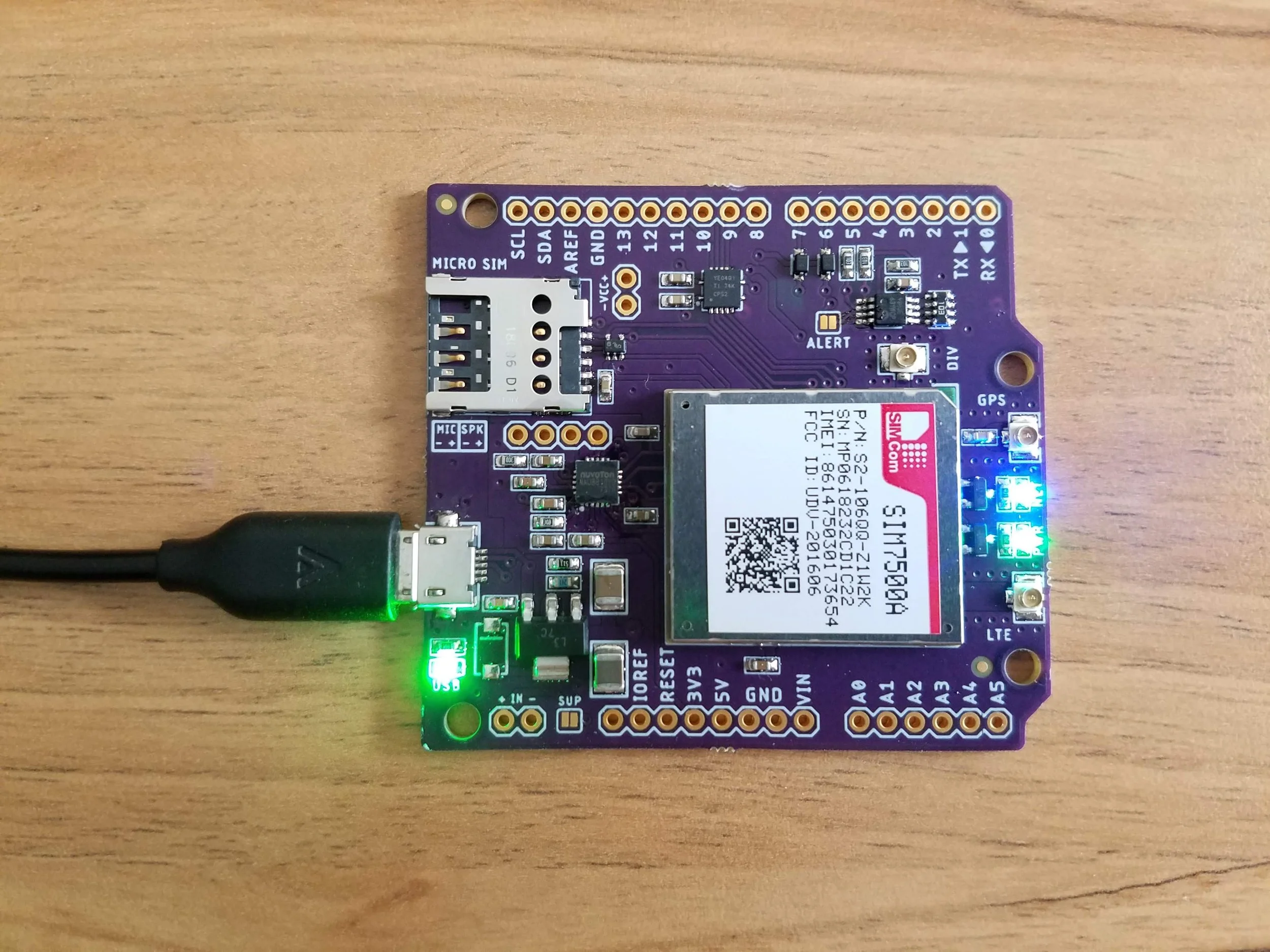Botletics™ SIM7500 4G LTE + GPS + Voice Shield Kit
Botletics™ SIM7500 4G LTE + GPS + Voice Shield Kit
NOTE: This product is not available for sale yet. Please do not contact about this product because availability is unknown!
This feature-packed cellular shield for Arduino combines the widely-supported 4G LTE technology as well as GPS positioning for IoT projects involving higher data rates than, say, the SIM7000 shield. It's directly compatible with Arduino Uno, Mega, and Leonardo as a shield and can be wired externally to practically any other microcontroller with the option for custom logic voltages. It includes a temperature sensor on board and supports full voice calling features so you can turn your Arduino into a full-fledged phone! It also has a built-in file system (EFS) and other amazing features!
Note: You will need a SIM card to operate this device. The Hologram SIM card works great with this product and can be purchased separately. Voice support for the Hologram SIM card is coming soon but not yet supported (only texting and data currently).
Resources:
Items Included:
SIM7500 shield board
Flexible, LTE diversity + GPS antenna with uFL connectors and 3M adhesive on the back
Stackable female header kit (these will require soldering)
Tech Specs
This shield has lots of features, all in a small Arduino-compatible shield! It's great for remote sensors, real-time GPS trackers, SMS-activated IoT devices, wireless devices with audio and voice, and many other cellular projects! Below are some tech specs:
Compatible with Arduino Uno, Arduino Mega, and Arduino Leonardo or practically any 1.8-5V microcontroller like ESP8266, ESP32, and Raspberry Pi if wired externally (see the shield pinouts in this tutorial)
LTE CAT-1 supporting uplink speed up to 5Mbps, downlink up to 10Mbps
The shield comes in two versions, SIM7500A and SIM7500E (learn how to select a version). Both support 4G LTE, 3G but the SIM7500E also supports 2G and 2.5G fallback
Supports text messaging, voice calling and microphone input
Supports TCP/IP/IPV4/V6 Multi-PDP,MT PDP and FTP/FTPS/HTTP/HTTPS/SMTP/POP3/DNS/MMS
Integrated GNSS/GPS positioning capabilities (see this GPS tracker tutorial)
MCP9808 High-accuracy I2C temperature sensor with 0.25° typical accuracy
Micro USB for debugging and sending AT commands (see this tutorial on how to install Windows drivers)
SIM7500 module power and network status LEDs
Convenient u.FL antenna connectors for added flexibility
Additional Notes
This kit is for evaluation only and is not FCC approved for resale. It is your responsibility to determine if the shield will work for you and cell coverage or network compatibility in your specific area cannot be guaranteed.
FCC Notice (47 CFR 2.803)
This kit is designed to allow:
(1) Product developers to evaluate electronic components, circuitry, or software associated with the kit to determine whether to incorporate such items in a finished product and
(2) Software developers to write software applications for use with the end product. This kit is not a finished product and when assembled may not be resold or otherwise marketed unless all required FCC equipment authorizations are first obtained. Operation is subject to the condition that this product not cause harmful interference to licensed radio stations and that this product accept harmful interference. Unless the assembled kit is designed to operate under part 15, part 18 or part 95 of this chapter, the operator of the kit must operate under the authority of an FCC license holder or must secure an experimental authorization under part 5 of this chapter.






